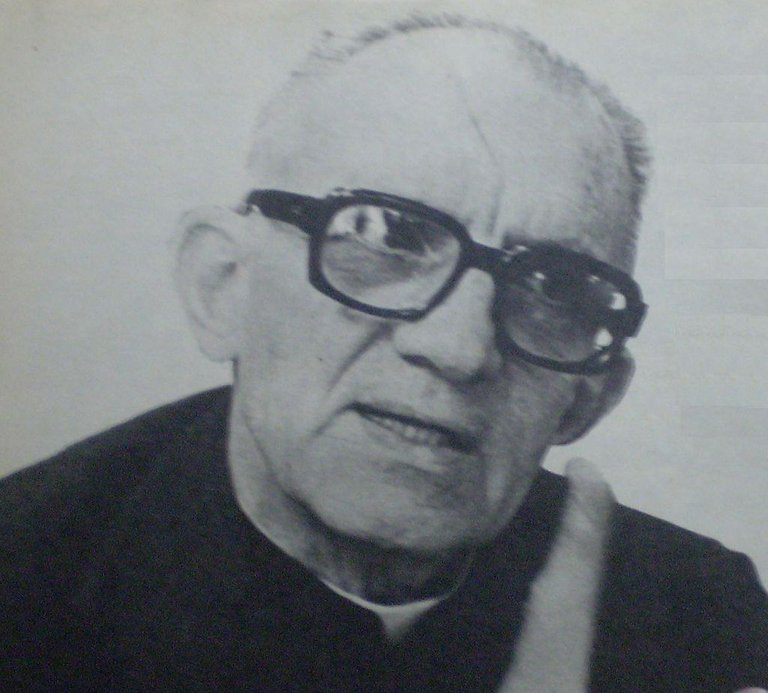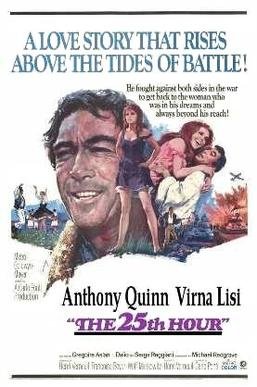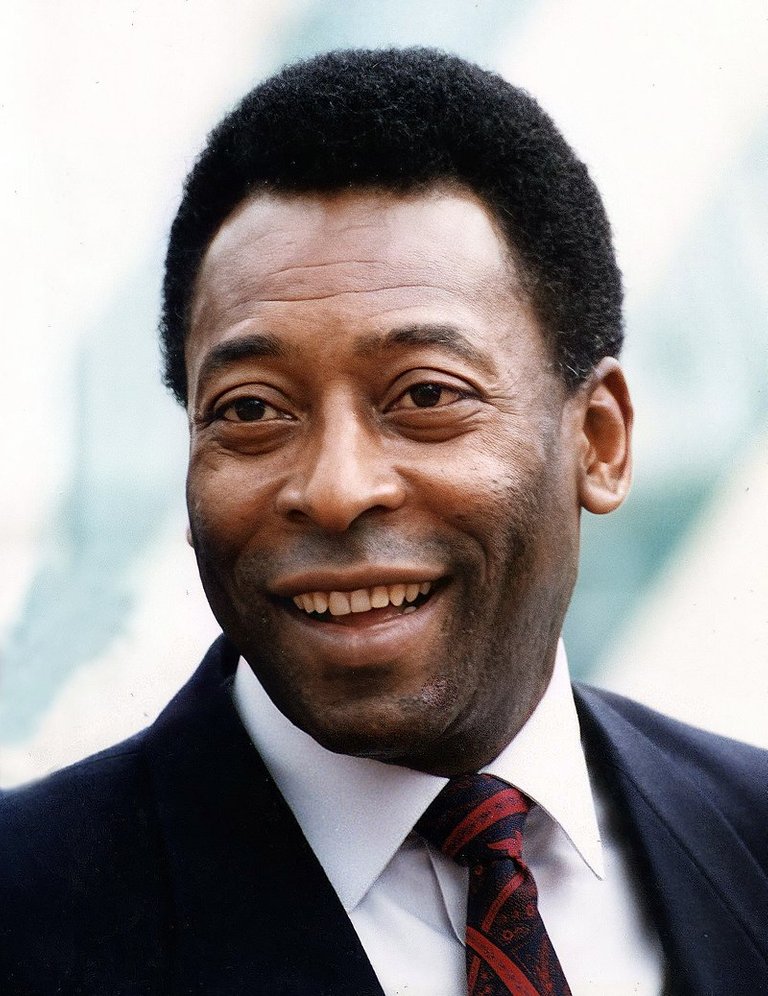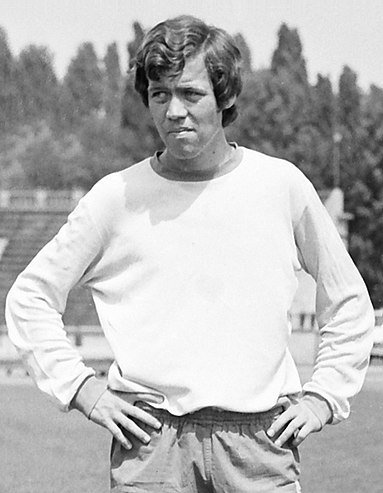What is Romania Most Famous For?
 @vikthor
@vikthor
I stumbled upon @vikthor, a nice guy from Romania. He enjoyed music and pop songs very much, and dreamed of becoming a singer.
He was very kind. By the way, I didn't know much about Romania.
I have heard the news that Romanians are friendly and like to help others.
Romanians proudly claimed to be descendants of the Romans.
Because of its fertile land and oil, Romania was a country with relatively stable economic power among Eastern European countries in the Balkans.
Due to the high agricultural productivity and abundant food, Romanians are generous and friendly.
Although Romania has lagged behind in economic development compared to Western Europe, it is a prosperous country in Eastern Europe.
 Constantin Virgil Gheorghiu (Romanian pronunciation: [konstanˈtin virˈdʒil ɡe̯orˈɡi.u]; September 15, 1916 in Războieni, Romania – June 22, 1992 in Paris, France)
Constantin Virgil Gheorghiu (Romanian pronunciation: [konstanˈtin virˈdʒil ɡe̯orˈɡi.u]; September 15, 1916 in Războieni, Romania – June 22, 1992 in Paris, France)
Constantin Virgil Gheorghiu (Romanian pronunciation: [konstanˈtin virˈdʒil ɡe̯orˈɡi.u]; September 15, 1916 in Războieni, Romania – June 22, 1992 in Paris, France) was a Romanian writer, best known for his 1949 novel, The 25th Hour, first published by Plon in France.
I remembered the Romanian world-famous author Constantin Virgil Gheorghiu and his literary work, 25 Hours.
 The 25th Hour (French: La Vingt-cinquième Heure)
The 25th Hour (French: La Vingt-cinquième Heure)
Gheorghiu's best-known book depicts the plight of a naive Romanian young farmhand, Johann Moritz, under German, Soviet and American occupation of Central Europe. Johann is sent to a labor camp by a police captain who covets his wife, Suzanna. At first, he is tagged as "Jacob Moritz", a Jew. Then, he and fellow Jewish prisoners escape to Hungary, where he is interned as a citizen of an enemy country. The Hungarian government sends its foreign residents as Hungarian "voluntary workers to Nazi Germany". Later, "Moritz Ianos" is "rescued" by a Nazi officer who determines he is a perfect Aryan specimen, and forces him into service in the Waffen SS as a model for German propaganda. Imprisoned after the war, he is severely beaten by his Russian captors, then put on trial by Allied forces because of his work for the Nazis. Meanwhile, Traian, son of the priest Koruga who employed Moritz in their Romanian village, is a famous novelist and minor diplomat whose first internment comes when he is picked up as an enemy alien by the Yugoslavs. Once imprisoned, the two heroes begin an odyssey of torture and despair. Traian Koruga is deeply unsettled because what he sees as the machinism and inhumanity of the "Western technical society", where individuals are treated as members of a category. Meanwhile, Koruga is writing a writing a book, "The 25th Hour", about Johann Moritz and the ordeal awaiting mankind. In the end, Traian takes his own life in an American-Polish concentration camp, while Johann is forced by the Americans to choose between either enlisting in the army, just as World War III is about to start, or to be interned in a camp (as well as his family) as a citizen from an enemy country.
The book was published in French translation in 1949 and was not published in Romania until 1991 (first time published in Romania by Editura Omegapres, Bucharest, 1991).
In 1967, Carlo Ponti produced a film based on Gheorghiu's book. The movie was directed by Henri Verneuil, with Anthony Quinn as Johann, Virna Lisi as Suzanna, and Serge Reggiani as Traian.
In a small Transylvanian village, a local police constable frames Johann Moritz on charges of being Jewish because Moritz's wife Suzanna has refused the constable's advances. Moritz is sent to a Romanian concentration camp as a Jew, where he is known as Jacob Moritz. He escapes to Hungary with some Jewish prisoners, but the Hungarians imprison them for being citizens of Romania, an enemy country. The Hungarian authorities eventually send them to Germany to fill German requests for foreign laborers. Moritz is spotted by an SS officer who designates him as an Aryan German-Romanian, freeing him from the labor camp and forcing him to join the Waffen-SS. After the war, Moritz is brutally beaten by the Soviets for having been a member of the Waffen-SS. He is then arrested and prosecuted as a war criminal by the Americans. Eventually he is released and reunited with his wife and sons in occupied Germany.
The film is based on the novel of the same name by Constantin Virgil Gheorghiu. The storyline includes Hungary's alliance with Nazi Germany, the forced cession of Bessarabia and Northern Bukovina to the Soviet Union in 1940 and subsequent events in Central Europe during and after World War II.
25 Hours was made into a French film starring Anthony Quinn and caused a worldwide sensation.
It was also very popular in the world I live in.
Romania originally belonged to the Allied Powers during World War II, but it had a tragic history of being trampled by great powers as it became an Axis power after being abandoned by the Allies.
Romania's tragic reality was revealed when a poor, good-natured young farmer, Johann Moritz, was dragged into slavery at the outbreak of World War II. Anthony Quinn's performance as Johann Moritz was a masterpiece.
The situation of Romanians being forcibly taken into the Second World War brought great sorrow and emotion.
They were simply forced into slavery in the war waged by Germany and the Soviet Union.
Romanians never wanted war, they wanted peace, but as they became slaves to the great powers, they suffered unfair deaths, looting, and rape.
I am afraid that my act of retelling the history of Romania's tragic past will offend my friend @vikthor.
So, I will stop the narrative.
 1970 FIFA World Cup official logo
1970 FIFA World Cup official logo
The 1970 FIFA World Cup was the ninth edition of the FIFA World Cup, the quadrennial international football championship for men's senior national teams. Held from 31 May to 21 June in Mexico, it was the first World Cup tournament staged in North America, and the first held outside Europe and South America. Teams representing 75 nations from all six populated continents entered the competition, and its qualification rounds began in May 1968. Fourteen teams qualified from this process to join host nation Mexico and defending champions England in the 16-team final tournament. El Salvador, Israel and Morocco made their debut appearances at the final stage.
The tournament was won by Brazil, who defeated another former two-time world champion, and current 1968 European champion Italy, by 4–1 in the final. Furthermore, during the tournament, Brazil also had to defeat other former two-time world champion and current 1967 South American champion Uruguay, by 3–1 in the semi-final, and the 1966 World Cup defending champions England, by 1–0 in the group stage. This is currently the only time that the winning team defeated the European and South American champions alongside the tournament's defending champions.
The win gave Brazil its third World Cup title, which allowed them to permanently keep the Jules Rimet Trophy, and a new trophy was introduced in 1974. The victorious team, led by Carlos Alberto and featuring players such as Pelé, Gérson, Jairzinho, Rivellino, and Tostão, is often cited as the greatest-ever football team.[1][2][3] They achieved a perfect record of wins in all six games in the finals, as well as winning all their qualifying fixtures.[4]
Despite the issues of altitude and high temperature,[5] the finals largely produced attacking football which created an average goals per game record not since bettered by any subsequent World Cup Finals.[6][7][8] With the advancements in satellite communications, the 1970 Finals attracted a new record television audience for the FIFA World Cup as games were broadcast live around the world[9] and, in a few cases, in colour - the first time that this was the case.[10][11]
When I think of Romania, the first thing that comes to mind is the Romanian soccer team that played a great match with Brazil of Pele, the king of soccer.😄
At The 1970 FIFA World Cup, the Romanian soccer team played the greatest match of all time against Pele's Brazilian soccer team, considered one of the strongest in history.
 Pelé in 1995
Pelé in 1995
Edson Arantes do Nascimento (Brazilian Portuguese: [ˈɛtsõ (w)ɐˈɾɐ̃tʃiz du nɐsiˈmẽtu]; born 23 October 1940), known as Pelé (Portuguese pronunciation: [peˈlɛ]), is a Brazilian former professional footballer who played as a forward. Regarded as one of the greatest players of all time and labelled "the greatest" by FIFA,[1] he was among the most successful and popular sports figures of the 20th century. In 1999 he was named Athlete of the Century by the International Olympic Committee and was included in the Time list of the 100 most important people of the 20th century. In 2000, Pelé was voted World Player of the Century by the International Federation of Football History & Statistics (IFFHS), and was one of the two joint winners of the FIFA Player of the Century. His 1,279 goals in 1,363 games, which included friendlies, is recognised as a Guinness World Record.[2]
Pelé began playing for Santos at age 15 and the Brazil national team at 16. During his international career, he won three FIFA World Cups: 1958, 1962 and 1970, the only player to do so. Pelé is the all-time leading goalscorer for Brazil with 77 goals in 92 games. At club level he is Santos' all-time top goalscorer with 643 goals from 659 games.[3] In a golden era for Santos, he led the club to the 1962 and 1963 Copa Libertadores, and to the 1962 and 1963 Intercontinental Cup. Credited with connecting the phrase "The Beautiful Game" with football, Pelé's "electrifying play and penchant for spectacular goals" made him a star around the world, and his teams toured internationally in order to take full advantage of his popularity.[4] During his playing days, Pelé was for a period the best-paid athlete in the world. Since retiring in 1977, Pelé has been a worldwide ambassador for football and has made many acting and commercial ventures. In 2010, he was named the Honorary President of the New York Cosmos.
Averaging almost a goal per game throughout his career, Pelé was adept at striking the ball with either foot in addition to anticipating his opponents' movements on the field. While predominantly a striker, he could also drop deep and take on a playmaking role, providing assists with his vision and passing ability, and he would also use his dribbling skills to go past opponents. In Brazil, he is hailed as a national hero for his accomplishments in football and for his outspoken support of policies that improve the social conditions of the poor. His emergence at the 1958 World Cup where he became the first black global sporting star was a source of inspiration.[5] Throughout his career and in his retirement, Pelé received several individual and team awards for his performance in the field, his record-breaking achievements, and legacy in the sport.
Pelé has been called the greatest player in world football history, and the Brazilian football team he leads boasted the greatest strength of all time.
 Florea Dumitrache (22 May 1948 – 26 April 2007)
Florea Dumitrache (22 May 1948 – 26 April 2007)
Florea Dumitrache (22 May 1948 – 26 April 2007) was a Romanian football forward. He was considered one of the best forwards in Europe at the time and was well known for his technique and aerial ability.
Romania was a strong European soccer team, and Florea Dumitrache was a world-famous striker.
Pelé showed off against Romania that he is the best player in soccer history. Pelé took the lead in the first half, shaking Romania's net twice. In particular, the free kick he succeeded in deceiving Romanian players was rated as the best goal in soccer history.
However, Romania also counterattacked fiercely against Brazil. Florea Dumitrache shook the Brazilian net to make the score 2-1.
Romania performed their best match against Pele's Brazil. However, Brazil's victory was assured as Pele gave Brazil his third goal in the 67th minute of the second half, making the score 3-1.
Romania's Emerich Deembrovschi gave Romania their second goal in the 84th minute of the second half, but there wasn't enough time to equalize.
Pele showed his best skills in the match against Romania, leading to Brazil's victory.
However, Romania had their greatest match in history against Pele's Brazil.
So, Pele later made this famous statement:
The most fun and exciting score in soccer match is 3-2.
At the 1970 World Cup in Mexico, Brazil won all matches, beating England 1-0, Peru 4-2, Uruguay 3-1 and Italy 4-1.
However, Brazil was the only team to beat Romania 3-2.
So, for Pele, the match against Romania was probably the most exciting and moving!
As Pele insisted, it is called Pele's Score because a score of 3 to 2 in soccer gives the greatest interest and excitement!
So, whenever I saw Romania, the first thing I remembered was the Romanian soccer team that had the best match against Pele.😄
I wonder if my friend @victhor agrees with me.😄
Thank you for this great introduction on me! I am really grateful for it! Also, thank you for the very interesting and well documented portrayal of my home country! One minor observation, Romania is situated at the crossroads of Central, Eastern, and Southeastern Europe, and, consequently, very little in the Balkans as the Balkans are properly geographically defined (i.e. the Balkan peninsula). Only Dobruja could be labeled as being part of the maximum extent of the Balkan peninsula and it's still not quite there entirely. Anyway, that is a matter of a mild geographic scholarly dispute. In terms of culture, a lot of southern Romania is very similar to its neighbouring Balkan neighbours (who are not that bad at all). The place where I come from in the northeastern part of the country has had a more Central European influence over the passing of time, but, in general, is not that different from the south.
As you pointed out, we might lack a lot in terms of economy when compared to Central and Western European states, but we are, generally, very friendly and welcoming. All the best, take care, stay safe, and keep up the good work! Have a great afternoon and evening! 😊
Dear @vikthor , Isn't Romania part of the Balkans? So, is Romania part of Eastern Europe?
Most of Romania is situated in Eastern Europe, whichever way you want to look at it. Then a small part of it is located in the Balkan peninsula. However, Romania is actually situated at the crossroads of Central, Eastern, and Southeastern Europe. Geography can be quite complicated sometimes indeed! 😅
I understand!
Cool, great! All the best and have a great day! 😊